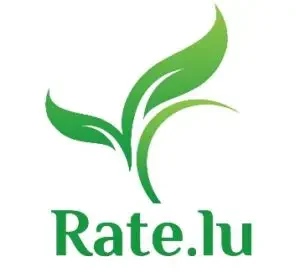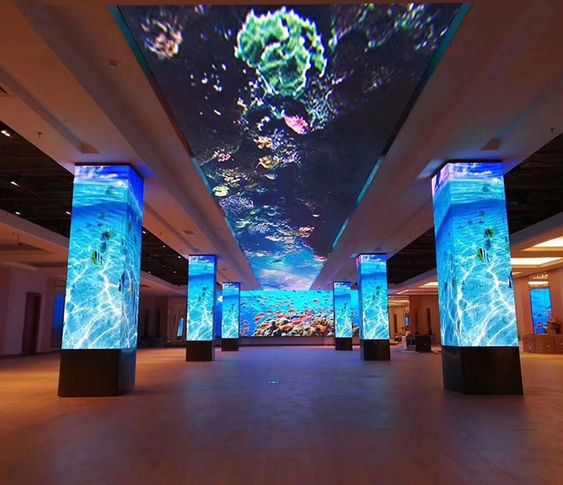Flexible LED displays represent a cutting-edge technology that is transforming visual communication. These versatile and dynamic displays offer a range of applications, from advertising and entertainment to architecture and design. This comprehensive article explores the technology behind flexible LED displays, their benefits, applications, key manufacturers, market dynamics, challenges, and future trends.
Understanding Flexible LED Display Technology
Flexible LED displays are composed of light-emitting diodes (LEDs) mounted on flexible substrates, allowing the displays to bend, curve, and fold without compromising performance. Key components of flexible LED displays include:
- Flexible Substrates: Materials such as plastic or thin metal that provide the base for the LEDs while allowing flexibility.
- LED Chips: The primary light sources, which are small, efficient, and capable of producing vibrant colors.
- Driver ICs: Integrated circuits that control the operation of the LEDs, ensuring consistent brightness and color accuracy.
- Control Systems: Hardware and software that manage the display’s content, synchronization, and settings.
- Power Supply: Efficient power units that deliver the necessary electrical power to the display.
Benefits of Flexible LED Displays
1. Versatility in Design
Flexible LED displays can be bent, curved, and shaped to fit a variety of surfaces and structures. This versatility allows for innovative and creative installations in places where traditional rigid displays would not be feasible.
2. High Brightness and Visibility
Like traditional LED displays, flexible LED displays offer superior brightness and visibility, making them effective for both indoor and outdoor applications. They can deliver clear and vibrant visuals even in challenging lighting conditions.
3. Lightweight and Thin Profile
The flexible nature of these displays makes them lightweight and thin, which simplifies installation and reduces structural load. This is particularly beneficial for applications in architecture and mobile installations.
4. Energy Efficiency
Flexible LED displays are energy-efficient, consuming less power compared to other display technologies. This efficiency translates into lower operating costs and supports sustainability initiatives.
5. Durability and Longevity
Despite their flexibility, these displays are durable and long-lasting, often exceeding 50,000 hours of operation. They are designed to withstand bending and twisting without compromising performance.
6. Dynamic Content Capabilities
Flexible LED displays can show a wide range of dynamic content, including videos, animations, and real-time data. This capability enhances viewer engagement and allows for more creative and impactful displays.
Key Manufacturers of Flexible LED Displays
Several companies are leading the way in the development and production of flexible LED displays, offering innovative products and comprehensive solutions.
1. LG Display
LG Display is a pioneer in flexible display technology, known for its high-quality flexible OLED and LED displays. Their products are used in various applications, including advertising, automotive, and wearable technology.
2. Samsung Display
Samsung Display offers a range of flexible LED and OLED solutions, characterized by high resolution, excellent color accuracy, and advanced control systems. Their displays are used in consumer electronics, advertising, and more.
3. ROE Visual
ROE Visual specializes in high-performance LED display solutions, including flexible LED displays. Their products are known for their reliability, flexibility, and visual quality, making them ideal for creative and large-scale installations.
4. Unilumin
Unilumin provides innovative LED display solutions, including flexible displays. Their products are designed for high performance and reliability, with features that cater to the specific needs of various industries.
5. Leyard
Leyard offers a wide range of LED display solutions, including flexible LED displays. Their products are known for their superior brightness, seamless integration, and durability, suitable for various applications.
Applications of Flexible LED Displays
1. Advertising and Digital Signage
Flexible LED displays are widely used in advertising and digital signage, providing dynamic and eye-catching content that captures attention. Their ability to conform to different shapes and surfaces allows for innovative advertising solutions.
2. Retail and Commercial Spaces
In retail environments, flexible LED displays are used for advertising, promotions, and interactive displays. They enhance the shopping experience by providing vibrant and engaging content on various surfaces and structures.
3. Architecture and Interior Design
Flexible LED displays are used in architecture and interior design to create unique visual elements. They can be integrated into walls, ceilings, and furniture, adding dynamic lighting and interactive features to spaces.
4. Entertainment and Events
In entertainment and event settings, flexible LED displays are used for stage backdrops, concert visuals, and interactive installations. Their flexibility allows for creative and immersive experiences.
5. Automotive and Transportation
Flexible LED displays are being integrated into automotive and transportation applications, including dashboards, control panels, and exterior displays. They enhance vehicle design and provide dynamic information to passengers.
6. Wearable Technology
In the wearable technology market, flexible LED displays are used in smartwatches, fitness trackers, and other wearable devices. Their lightweight and flexible nature makes them ideal for devices that conform to the body.
Market Dynamics and Trends
The market for flexible LED displays is growing rapidly, driven by several key trends and dynamics.
1. Increasing Demand for Innovative Displays
The demand for innovative and eye-catching displays is a major driver of the flexible LED display market. Businesses are increasingly recognizing the benefits of dynamic and flexible displays for advertising and communication.
2. Technological Advancements
Continuous advancements in LED and substrate technology are improving the performance, resolution, and durability of flexible LED displays. Innovations such as MicroLED and MiniLED are further enhancing the capabilities of these screens.
3. Customization and Personalization
The ability to customize flexible LED displays in terms of size, shape, and content is driving their adoption in various industries. This flexibility allows businesses to tailor their displays to specific needs and preferences.
4. Growth of Smart Cities
The development of smart cities is boosting the demand for advanced display technologies, including flexible LED displays. These cities require efficient, dynamic information systems, and flexible displays fit the bill perfectly.
5. Sustainability and Energy Efficiency
With a growing focus on sustainability, there is increasing demand for energy-efficient technologies. Flexible LED display with their low power consumption and long lifespan, align well with this trend.
Conclusion
Flexible LED displays are at the forefront of visual communication technology, offering a unique combination of versatility, high visibility, and dynamic content capabilities. Their applications span a wide range of industries, from advertising and retail to architecture and entertainment. As technology continues to evolve and market awareness increases, the adoption of flexible LED displays is set to grow, transforming the way businesses and organizations communicate with their audiences. With ongoing advancements and a focus on sustainability, the future of flexible LED displays promises even more exciting possibilities and innovations.

